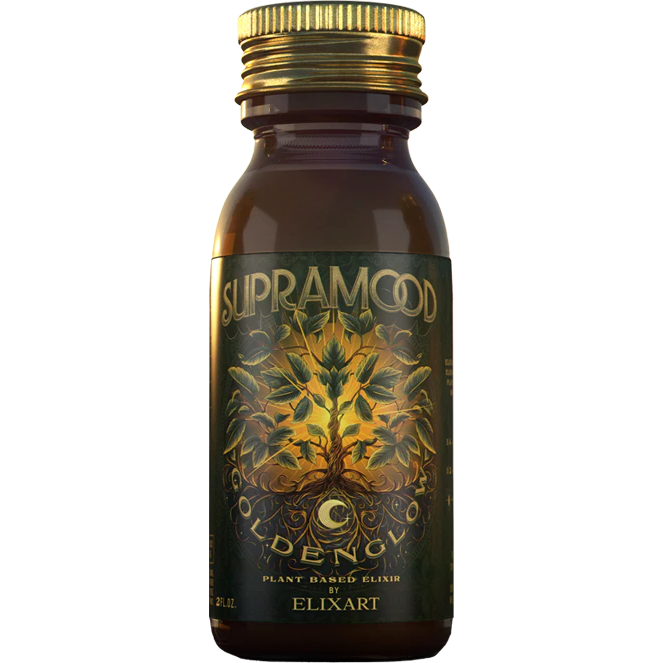Imagine savoring a warm cup of Kava, its earthy flavors enveloping you after a long day. Now, imagine that simple pleasure disappearing due to sudden legal restrictions in your country. As Kava rises in popularity, its legal status has come under scrutiny around the world. Let's dive into how these developments are shaping this beloved beverage and what it means for you.
Kava’s Global Legal Landscape: An Overview of Legal Status by Country
Kava, a drink made from the roots of the Kava plant, has been cherished for centuries. Its calming effects make it popular in many cultures. However, the legal status of Kava varies greatly across the globe. In this article, we’ll explore Kava laws in different regions, including the Pacific Islands, the US, Europe, and Asia. How do cultural perspectives shape these laws? Let’s dive in.
1. Kava Laws Across Regions
- Pacific Islands: Countries like Fiji and Vanuatu fully legalize Kava. These nations embrace its cultural significance, using it in traditional ceremonies.
- United States: The legal outlook is mixed. While Kava is available in many states, regulations vary widely. Some states may require specific labeling or restrict its sale.
- Europe: Countries such as Denmark and Norway impose restrictions. These limits often stem from health concerns but might also be influenced by cultural perceptions.
- Asia: The situation is evolving. Nations like Japan have begun to acknowledge Kava’s benefits, while others remain skeptical.
2. Bans vs. Regulated Sales
There’s a stark contrast between countries that ban Kava and those that permit its sale under regulation.
Outright bans can lead to underground markets, where quality and safety are questionable. Regulated sales, on the other hand, allow consumers to access safe and tested products. This difference in approach raises the question: what should really dictate these laws? Safety? Tradition? Or maybe a combination of both?
3. Cultural Significance and Its Influence
Cultural traditions significantly shape legal perceptions of Kava. In many Pacific nations, Kava plays a crucial role in community bonding and social gatherings. It’s not just a beverage; it's a tradition. This cultural reverence influences governments to embrace more lenient laws.
4. Consumer Rights and Access Issues
Legal battles often overshadow the positive effects Kava can have on mental health. As noted by an advocate,
"Kava has been celebrated for its calming properties, but legal challenges often overshadow its benefits."
Access to Kava can be a right for consumers in regions that legally embrace it. However, restrictions can lead to limited access and consumer confusion.
5. Data Overview: The Current Landscape
The demand for Kava is on the rise. Recent statistics reveal interesting trends:
- Countries where Kava is fully legal: Fiji, Vanuatu, and more.
- Countries with restrictions: Denmark, Norway, among others.
- A 2023 report indicates a growing consumer interest in regulated markets.
// Chart Data: // Categories: Fully Legal, Restricted var chartData = { labels: ['Fully Legal', 'Restricted'], data: [2, 20] // Approximate numbers for demonstration };
Overall, understanding Kava's legal landscape involves recognizing the intersection of culture, consumer rights, and the market. As you navigate this complex world, keep informed about how these laws may impact your access. Interested in trying Kava or similar products? Check out Supramood's GoldenGlow Elixir for a unique experience.
For additional insights, visit NCBI or Frontiers in Psychology.
Recent Regulatory Developments: Key Changes Affecting Availability
In recent years, Kava has seen notable shifts in its legal landscape. These changes have a direct impact on availability in various regions. Understanding these developments is crucial if you're a consumer or producer in the Kava market. In this section, we'll explore the latest legislative changes, regulatory adjustments, and how they shape accessibility for you.
Overview of Recent Legislative Changes
Recent legislation affecting Kava has largely focused on health and safety regulations. For instance, some countries have loosened restrictions, recognizing Kava's cultural significance and inherent benefits. Meanwhile, others remain cautious, imposing strict guidelines. Can you imagine the confusion this creates in the marketplace? It's a dynamic environment indeed.
Case Studies of Regulatory Adjustments in Key Markets
- The United States: Legal battles in the US have led to different rulings across states. Some states have embraced Kava, while others have imposed bans.
- Australia: Here, Kava faced significant bans due to health concerns. However, recent shifts in legal perceptions have started to change the narrative.
- Europe: While some European countries embrace Kava for its cultural importance, regulation varies greatly across borders.
It's a classic case of one size doesn't fit all. How each country treats Kava is influenced by its cultural history and health guidelines. This can lead to uneven availability for consumers.
Response from Kava Producers to Changes
Kava producers have had to adapt swiftly to changing regulations. Many have reformulated their products to comply with new safety measures. For example, producers now emphasize sourcing Kava from reputable farms to ensure quality and safety. This response is not just a regulatory obligation; it’s a market necessity.
As an industry expert once said,
"Regulatory changes are reshaping Kava accessibility, impacting both consumers and producers."
This highlights the broader implications of such changes. Adaptation is critical for survival.
Consumer Feedback and Adaptation
Feedback from consumers has been mixed, with many appreciating the enhanced safety but concerned about availability. Kava enthusiasts often express frustration over inconsistent access, especially in regions with strict regulations.
Moreover, the changing rules have led to an increase in Kava product formulations. Producers are creatively diversifying their offerings to cater to new consumer needs while complying with regulations.
Year
Major Regulatory Changes
Increases in Kava Product Formulations
|
2019 |
US market sees state-by-state bans |
10% increase |
|
2020 |
Australia revisits Kava restrictions |
15% increase |
|
2021 |
European countries start allowing imports |
20% increase |
|
2022 |
Health guidelines shift positively in the US |
30% increase |
|
2023 |
More formulations targeting health-conscious consumers |
25% increase |
Clearly, the ongoing regulatory changes have played a significant role in shaping the Kava industry. If you're curious about high-quality Kava products that comply with evolving regulations, check out the Supramood GoldenGlow Elixir.
It’s essential to stay informed about these developments, as they can affect both the market and your personal choices as a consumer. For further reading on Kava's legal status globally, you might want to explore resources from Kava.com or the World Health Organization.
Impact on the Market and Prices: How Laws Influence the Industry
As the Kava market continues to evolve, understanding how laws affect prices is crucial. You may wonder, how do regulatory changes influence what you pay for Kava? The connection isn't just about law; it is about the very fabric of demand and availability.
Link Between Regulation Changes and Kava Pricing
Kava pricing is closely tied to its legal status. When regulations tighten, availability shrinks. This creates a ripple effect. Prices surge as demand stays strong. For instance, a recent tightening of laws in specific regions resulted in a significant percentage increase in Kava prices.
- Increased Regulation: Leads to limited supply.
- Legalization: Can boost market growth and decrease prices.
Countries that have recently legalized Kava often see an influx of products. This counteracts the price spikes experienced in regions with stricter laws. If you compare Kava pricing across these legal regions, the differences are striking.
Market Fluctuations: Demand Versus Availability
The balance between demand and availability shapes the Kava market. You might think of it like a game of tug-of-war. On one side, you have eager consumers wanting their Kava fix. On the other, supply constraints hold them back.
For instance, especially during regulatory changes, demand often remains high. Importers and local producers scramble to meet consumer needs.
Economic Impact: Small Producers Versus Larger Importers
What's the economic impact on small producers compared to larger importers? It's quite pronounced. Small producers often suffer more during regulatory changes. They can't pivot quickly like larger companies can. Larger importers usually have the resources to manage sudden shifts in the market.
Consider the following:
- Small Producers: At a disadvantage in high-demand situations.
- Larger Importers: Likely to thrive due to resource availability.
This disparity creates a fascinating dynamic. You might find that small producers lead the charge for quality, but they struggle against low-cost mass imports when prices shift dramatically.
Consumer Trends in Response to Price Shifts
How do consumers react when Kava prices change? It’s often a complex interaction. Price hikes can lead to more discerning buyers. They may seek alternatives, adjusting their consumption patterns. For example, some consumers are turning to products that claim to offer benefits similar to Kava, such as Supramood GoldenGlow Elixir.
As you observe, the *ever-changing legal landscape complicates the Kava market—it's a delicate dance of demand and availability*,” says a market analyst. It’s this complexity that fuels ongoing discussions about Kava’s future. Will regulations become more stringent, or will they loosen to favor market growth?
In summary, understanding how laws shape the Kava industry is essential. Whether you are a small producer or a consumer, these legal changes profoundly affect your experience. Keeping a pulse on regulatory shifts will help you navigate this intriguing market.
For further insights, you might explore additional resources like Kava Log and HerbalGram for comprehensive information on Kava's status around the globe.
Future Trends in Regulation: Where the Legal Landscape May Head Next
The world of Kava regulation is evolving. This evolution is shaped by various factors, including public opinion, scientific research, and international relations. What can we predict for the future? Let's break down the potential trends you might see in Kava regulation.
1. Predictions Based on Current Regulatory Trends
As legislative bodies around the globe reassess the potential of Kava, the legal landscape could shift significantly. Countries that once viewed Kava with suspicion are now considering its benefits. This is largely due to increased awareness of Kava's cultural significance and potential health benefits. Don't be surprised if more countries move towards legalization or regulation. But how long will it take?
2. Influence of Global Events on Local Laws
Global events have a direct impact on local laws. A recent health crisis, for example, has highlighted the importance of mental health and wellness. This has pushed Kava into the spotlight. As more people seek natural remedies, lawmakers may respond by creating more flexible regulations surrounding Kava. In this case, global health trends drive local legislation.
3. Potential for Harmonization of Kava Regulations Worldwide
Imagine a world where Kava regulations are consistent across borders. This could become a reality. As Kava gains popularity, there is growing encouragement for international regulatory harmonization. Countries may collaborate, sharing data and insights to create unified standards. This is essential for both consumer safety and market growth.
4. Advice for Consumers Amidst Changing Regulations
For you, the consumer, navigating these changes can be confusing. Here are a few tips:
- Stay informed: Follow news about Kava regulations in your area.
- Check product labels carefully: Look for compliant, reputable sources.
- Engage with advocacy groups: They can provide updates and education about changing laws.
As changes occur, safe options like Supramood GoldenGlow Elixir can help you enjoy Kava responsibly, ensuring you're benefiting without worrying about legality.
"The future of Kava regulation may depend on global cooperation and understanding of its benefits." - Kava Researcher
5. Potential Market Growth Contingent on Legal Status
Market growth projections are optimistic, particularly if legal status improves. A clear regulatory framework could lead to increased availability and lower prices. This is crucial for both consumers and suppliers. If the legal landscape continues to evolve positively, expect to see more players enter the market.
Conclusion
The future of Kava regulation is uncertain, but trends suggest a more favorable outlook. Global events shape local laws, creating avenues for reform. Advocacy plays a critical role, as does the market's response to these changes. As a consumer, it’s crucial to remain informed and adapt to the shifting landscape. Embrace the journey with products that prioritize quality and compliance. For an excellent option, check out the Supramood GoldenGlow Elixir. Together, we can navigate this new era for Kava.
For more insights, consider exploring resources such as Kava Catalog or Kava Love to stay updated on the legal landscape surrounding Kava.
TL;DR: Kava's legal status varies globally, and recent regulatory changes are reshaping availability, market dynamics, and future prospects. Understanding these shifts is crucial for consumers and industry participants alike.







Leave a comment
This site is protected by hCaptcha and the hCaptcha Privacy Policy and Terms of Service apply.